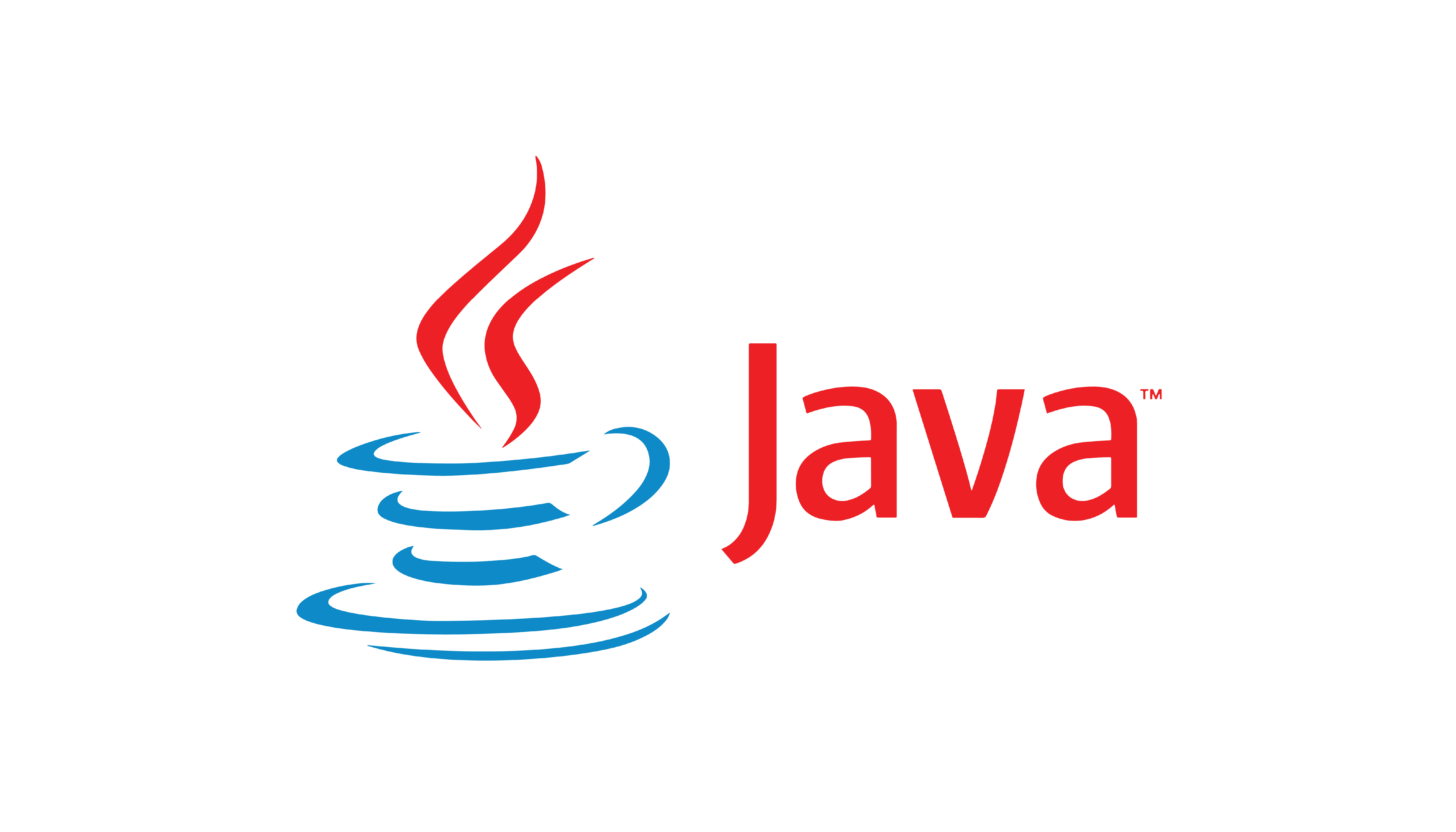
JSON处理——FastJson、Jackson、Gson详细使用
JSON处理——FastJson、Jackson、Gson详细使用
文章目录
一、基本介绍
JSON:一种轻量级的数据交换格式。JSON的数据格式比较简单,易于读写,层级清晰分明。目前在前后端的交互中,几乎都是使用JSON实现的。例如如下数据
{
"code": 200,
"msg": "成功",
"list": [{
"name": "张三",
"age": 18,
"sex": "男"
}, {
"name": "李四",
"age": 19,
"sex": "女"
}]
}
解析JSON:目前解析JSON的方式有很多,例如阿里的FastJson、谷歌的Gson、Jackson等,下面就是几种解析JSON的方式。
二、FastJson使用
maven依赖:在pom.xml文件中引入依赖
<dependency>
<groupId>com.alibaba</groupId>
<artifactId>fastjson</artifactId>
<version>1.2.47</version>
</dependency>
常用类:FastJson常用类有JSON、JSONObject、JSONArray,它们的作用及常用方法如下:
| 类 | 类作用 | 常用方法 | 方法作用 |
|---|---|---|---|
| JSON | 1.将Java对象序列化为JSON字符串 2.将JSON字符串反序列化为Java对象 | toJSONString | 将对象转换为JSON字符串(静态方法) |
| parseObject | 将JOSN字符串转换为JSON数组(静态方法) | ||
| parseArray | 将JOSN字符串转换为JSON对象(静态方法) | ||
| JSONObject | 1.继承于JSON类、Map接口实现类 2.JSONObject对象中的数据都是以 key-value形式出行,使用起来和Map类似 | parseObject | 直接继承JSON类同名方法 未重写 |
| getString | 获取json对象key对应的value值,返回String类型 | ||
| get | 获取json对象key对应的value值,返回Object类型 | ||
| put | 添加key-value到json对象中 | ||
| getJSONArray | 获取json对象key对应的value值,并将value值转换为JSONArray类型 | ||
| getJSONObject | 获取json对象key对应的value值,并将value值转换为JSONObject类型 | ||
| JSONArray | 1.继承于JSON类、List接口实现类 2.代表JSON数组,数组中每个存储的就是JSON对象 | parseArray | 直接继承JSON类同名方法 未重写 |
| add | 添加对象到JSON数组 | ||
| getJSONObject | 获取指定坐标下的JSON对象 |
2.1 对象序列化为JSON字符串
@Test
public void mapToJsonString(){
Map<String,String> map=new HashMap<>();
map.put("key1","One");
map.put("key2","Two");
System.out.println(JSON.toJSONString(map));
/* 输出{"key1":"One","key2":"Two"} */
}
@Test
public void pojoListToJsonString(){
List<User> userList=new ArrayList<>();
User user1=new User("admin1","12","男");
User user2=new User("admin2","13","女");
userList.add(user1);
userList.add(user2);
System.out.println(JSON.toJSONString(userList));
/* 输出 [{"age":"12","name":"admin1","sex":"男"},{"age":"13","name":"admin2","sex":"女"}] */
}
@Test
public void jsonObjectToJsonString(){
/*JSONObject.toJSONString和 JSON.toJSONString
* JSONObject继承于 JSON toJSONString也只在JSON类中 未在JSONObject中重写
* */
String jsonString="{\"key1\":\"One\",\"key2\":\"Two\"}";
JSONObject object = JSONObject.parseObject(jsonString);
String str1=JSONObject.toJSONString(object);
String str2=JSON.toJSONString(object);
System.out.println(str1);
System.out.println(str2);
/*输出 {"key1":"One","key2":"Two"}*/
}
2.2 JSON字符串反序列化为对象
@Test
public void jsonStringToJsonObject(){
/*JSONObject是一个继承自JSON的类,当调用JSONObject.parseObject(result)时,
会直接调用父类的parseObject(String text)*/
String jsonString="{\"key1\":\"One\",\"key2\":\"Two\"}";
JSONObject object = JSONObject.parseObject(jsonString);
System.out.println(object.get("key1"));//输出 One
JSONObject jsonObject=JSON.parseObject(jsonString);
System.out.println(jsonObject.get("key1"));//输出 One
}
@Test
public void jsonArrayStringToJsonArray(){
String jsonArrayString="[{\"name\":\"张三\",\"age\":25},{\"name\":\"李四\",\"age\":28}]";
JSONArray jsonArray=JSONArray.parseArray(jsonArrayString);
for(Object object:jsonArray){
JSONObject jsonObject=(JSONObject)object;
System.out.println(jsonObject.get("name")); // 输出张三 李四
}
}
@Test
public void JsonStringToMapOrPo(){
String listStr="[{\"age\":\"12\",\"name\":\"admin1\",\"sex\":\"男\"},{\"age\":\"13\",\"name\":\"admin2\",\"sex\":\"女\"}]";
String str="{\"age\":\"12\",\"name\":\"admin1\",\"sex\":\"男\"}";
List<User> userList=JSONArray.parseArray(listStr,User.class);
userList.stream().forEach(user->System.out.println(user));
User user=JSONObject.parseObject(str,User.class);
System.out.println(user);
}
2.3 JSON对象、JSON数组的其他操作
@Test
public void test1(){
String goodsData = "{\"code\":0,\"kind\":\"Electronics\",\"list\":[{\"name\":\"computer\",\"price\":4500,\"size\":60},{\"name\":\"iphone\",\"price\":6000,\"size\":55},{\"name\":\"watch\",\"price\":500,\"size\":35}]}";
JSONObject jsonObject=JSON.parseObject(goodsData);
System.out.println(jsonObject.getJSONArray("list"));
String list=jsonObject.getString("list");
System.out.println(JSON.parseArray(list));
}
@Test
public void pojoListTOJsonArray(){
List<User> userList=new ArrayList<>();
User user1=new User("admin1","12","男");
User user2=new User("admin2","13","女");
userList.add(user1);
userList.add(user2);
System.out.println(JSON.toJSONString(userList));
JSONArray jsonArray=JSONArray.parseArray(JSON.toJSONString(userList));
JSONObject jsonObject=(JSONObject)jsonArray.get(0);
System.out.println(jsonObject.get("name"));
JSONArray jsonArray1=(JSONArray)JSONArray.toJSON(userList);
JSONObject jsonObject1=(JSONObject)jsonArray1.get(0);
System.out.println(jsonObject1.get("name"));
}
2.4 JSONPath解析JSON
简介:JsonPath参照Xpath解析xml的方式来解析Json。
| 运算符 | 含义 |
|---|---|
| $ | 根元素 |
| . | 子元素 |
| * | 通配符 任何元素 |
| [] | 下标运算符 |
@Test
public void test(){
String string = "{\"code\":0,\"data\":{\"kind\":\"Electronics\",\"list\":" +
"[{\"name\":\"computer\",\"price\":4500,\"size\":55}," +
"{\"name\":\"iphone\",\"price\":6000,\"size\":60}," +
"{\"name\":\"watch\",\"price\":8000,\"size\":30}]}}";
JSONObject jsonObject = JSON.parseObject(string);
System.out.println(JSONPath.eval(jsonObject,"$.data.list[0].name"));//第一个对象的name
System.out.println(JSONPath.eval(jsonObject,"$.data.list.name"));//全部对象的name
System.out.println(JSONPath.eval(jsonObject,"$.data.list[0,2].name"));//只取第一个和第三个的name
System.out.println(JSONPath.eval(jsonObject,"$.data.list[0:2].name"));//取1-3个的name
}
三、Jackson使用
介绍:一种JSON处理的开源工具库,Spring框架中默认使用的Jackson处理JSON。
Spring版本兼容问题:jackson-databind 2.11.0及以上版本与spring-boot版本兼容,推荐使用2.11.0及以上版本
maven依赖:在pom.xml文件中引入依赖
<dependency>
<groupId>com.fasterxml.jackson.core</groupId>
<artifactId>jackson-databind</artifactId>
<version>2.11.2</version>
</dependency>
<dependency>
<groupId>com.fasterxml.jackson.core</groupId>
<artifactId>jackson-core</artifactId>
<version>2.11.2</version>
</dependency>
<dependency>
<groupId>com.fasterxml.jackson.core</groupId>
<artifactId>jackson-annotations</artifactId>
<version>2.11.2</version>
</dependency>
核心类:ObjectMapper作为Jackson中最常用的类,提供了Java对象和JSON字符串相互转换的方法
| 类 | 常用方法 | 方法作用 |
|---|---|---|
| ObjectMapper | writeValueAsString | JSON序列化操作 将Java对象转换为JSON字符串 |
| readValue | JSON反序列化操作 将JSON字符串、文件流等转换为Jav对象 |
3.1 ObjectMapper基本使用
序列化操作:将其他对象转换为JSON字符串
@Test
public void test1() throws JsonProcessingException {
ObjectMapper mapper=new ObjectMapper();
User user=new User("admin","12","男");
System.out.println(mapper.writeValueAsString(user));//输出 {"name":"admin","age":"12","sex":"男"}
Map map=new HashMap<String,String>();
map.put("name","admin");
map.put("age","12");
map.put("sex","男");
System.out.println(mapper.writeValueAsString(map));//输出 {"sex":"男","name":"admin","age":"12"}
Map<String, Date> dateMap=new HashMap<>();
dateMap.put("date",new Date());
//默认情况下时间输出时间戳,这里设置时间类型为如下格式
mapper.setDateFormat(new SimpleDateFormat("yyyy-MM-dd HH:mm:ss"));
System.out.println(mapper.writeValueAsString(dateMap));//输出 {"date":"2022-12-11 13:00:35"}
List<User> userList=new ArrayList<>();
userList.add(new User("admin","12","男"));
userList.add(new User("admin1","13","女"));
System.out.println(mapper.writeValueAsString(userList));//输出 [{"name":"admin","age":"12","sex":"男"},{"name":"admin1","age":"13","sex":"女"}]
}
反序列化:将JSON字符串转化为Java对象
@Test
public void test2() throws JsonProcessingException {
ObjectMapper mapper=new ObjectMapper();
String str="{\"name\":\"admin\",\"age\":\"12\",\"sex\":\"男\"}";
User user=mapper.readValue(str, User.class);
System.out.println(user);
Map<String,String> map=mapper.readValue(str,Map.class);
System.out.println(map);
String jsonListString="[{\"name\":\"admin\",\"age\":\"12\",\"sex\":\"男\"},{\"name\":\"admin1\",\"age\":\"13\",\"sex\":\"女\"}]";
List<User> userList=mapper.readValue(jsonListString, new TypeReference<List<User>>() {});
System.out.println(userList);
}
3.2 ObjectMapper相关配置及异常场景
常用配置汇总:
ObjectMapper mapper=new ObjectMapper();
/*1.====序列化===*/
mapper.setSerializationInclusion(JsonInclude.Include.NON_EMPTY);//序列化不为空的值
mapper.configure(SerializationFeature.FAIL_ON_EMPTY_BEANS, false);//如果对象为空不抛出异常
mapper.configure(SerializationFeature.WRITE_DATES_AS_TIMESTAMPS, false);
mapper.setDateFormat(new SimpleDateFormat("yyyy-MM-dd HH:mm:ss"));
/*3.====反序列化象===*/
//遇到未知属性不报错 设置为false,表示:json中字段多了,不会影响json转Object
mapper.configure(DeserializationFeature.FAIL_ON_UNKNOWN_PROPERTIES, false);
//为空对象不抛异常 设置为ture时,可以将一个空字符串“”转成一个null。如{“student”:””},其中“student”在反序列化时对应类Student,此时Student的值会被设置为null。
mapper.configure(DeserializationFeature.ACCEPT_EMPTY_STRING_AS_NULL_OBJECT, true);
/*解析json时,过滤JSON注释符*/
mapper.configure(JsonParser.Feature.ALLOW_COMMENTS, true);
/*解析JSON时,可以解析属性值为单引号的属性名*/
mapper.configure(JsonParser.Feature.ALLOW_SINGLE_QUOTES, true);
/*解析JSON时,可以解析 属性名没有双引号的非标准json字符串*/
mapper.configure(JsonParser.Feature.ALLOW_UNQUOTED_FIELD_NAMES, true);
场景一:序列化对象属性为空,默认会抛出异常
@Test
public void testConfig1() throws JsonProcessingException {
NoUser user=new NoUser();//NoUser类中无任何属性
ObjectMapper mapper=new ObjectMapper();
System.out.println(mapper.writeValueAsString(user));//抛出异常 com.fasterxml.jackson.databind.exc.InvalidDefinitionException: No serializer found for....
}
@Test
public void testConfig2() throws JsonProcessingException {
NoUser user=new NoUser();//NoUser类中无任何属性
ObjectMapper mapper=new ObjectMapper();
mapper.configure(SerializationFeature.FAIL_ON_EMPTY_BEANS,false);
System.out.println(mapper.writeValueAsString(user));//输出{}
}
场景二:序列化对象时,只序列化属性值不为空的属性
@Test
public void testConfig3() throws JsonProcessingException {
User user=new User("admin","12",null);
ObjectMapper mapper=new ObjectMapper();
System.out.println(mapper.writeValueAsString(user));//输出 {"name":"admin","age":"12","sex":null}
ObjectMapper objectMapper=new ObjectMapper();
objectMapper.setSerializationInclusion(JsonInclude.Include.NON_EMPTY);
System.out.println(objectMapper.writeValueAsString(user));//输出 {"name":"admin","age":"12"}
}
场景三:序列化时,时间格式化问题
@Test
public void testConfig6() throws JsonProcessingException {
Map<String, Date> dateMap=new HashMap<>();
dateMap.put("date",new Date());
ObjectMapper objectMapper=new ObjectMapper();
System.out.println(objectMapper.writeValueAsString(dateMap));//输出 {"date":1670740657007}
ObjectMapper mapper=new ObjectMapper();
mapper.configure(SerializationFeature.WRITE_DATES_AS_TIMESTAMPS,false);
mapper.setDateFormat(new SimpleDateFormat("yyyy-MM-dd HH:mm:ss"));
System.out.println(mapper.writeValueAsString(dateMap));//输出 {"date":"2022-12-11 14:37:37"}
}
场景四:反序列化时,字符串中字段与Java实体类字段不是一一对应
@Test
public void testConfig4() throws JsonProcessingException {
String str="{\"name\":\"admin\",\"age\":\"12\",\"sex\":\"男\",\"other\":\"111\"}";
ObjectMapper objectMapper=new ObjectMapper();
User user=objectMapper.readValue(str,User.class);
System.out.println(user);//抛出异常 com.fasterxml.jackson.databind.exc.UnrecognizedPropertyException: Unrecognized field
}
@Test
public void testConfig5() throws JsonProcessingException {
String str="{\"name\":\"admin\",\"age\":\"12\",\"sex\":\"男\",\"other\":\"111\"}";
ObjectMapper objectMapper=new ObjectMapper();
objectMapper.configure(DeserializationFeature.FAIL_ON_UNKNOWN_PROPERTIES,false);
User user=objectMapper.readValue(str,User.class);
System.out.println(user);//输出 User(name=admin, age=12, sex=男)
}
3.3 注解方式配置
注解:除去使用ObjectMapper属性配置化解析json外,还可以通过Jackson的注解来实现配置化解析。
| 注解 | 注解作用 |
|---|---|
| @JsonProperty | 字段序列化和反序列化时,转换为另一个名称 @JsonProperty("birth_date") 含义:birthDate字段解析时用birth_date |
| @JsonFormat | Date类型字段序列化和反序列化时 指定类型 例如: @JsonFormat(timezone = "GMT+8", pattern = "yyyy-MM-dd HH:mm:ss") |
| @JsonIgnore | 字段在序列化和反序列化时会被忽略掉 |
| @JsonIgnoreProperties | 对象序列化和反序列化时,忽略对象的多个属性 |
| @JsonInclude | 注解放在类上,则决定解析什么字段 @JsonInclude(JsonInclude.Include.NON_EMPTY) 类下所有字段属性为 空("") 或者为 NULL 都不序列化 |
四、Gson使用
maven依赖:在pom.xml文件中引入依赖
<dependency>
<groupId>com.google.code.gson</groupId>
<artifactId>gson</artifactId>
<version>2.8.2</version>
</dependency>
序列化操作
@Test
public void toJsonTest(){
Gson gson=new Gson();
User user=new User("admin","12","男");
System.out.println(gson.toJson(user));//输出 {"name":"admin","age":"12","sex":"男"}
Map map=new HashMap<String,String>();
map.put("name","admin");
map.put("age","12");
map.put("sex","男");
System.out.println(gson.toJson(map));//输出 {"sex":"男","name":"admin","age":"12"}
Map<String, Date> dateMap=new HashMap<>();
dateMap.put("date",new Date());
System.out.println(gson.toJson(dateMap));//输出 {"date":"Dec 11, 2022 3:13:57 PM"}
List<User> userList=new ArrayList<>();
userList.add(new User("admin","12","男"));
userList.add(new User("admin1","13","女"));
System.out.println(gson.toJson(userList));//输出 [{"name":"admin","age":"12","sex":"男"},{"name":"admin1","age":"13","sex":"女"}]
}
反序列化操作
@Test
public void fromJsonTest() {
Gson gson=new Gson();
String str="{\"name\":\"admin\",\"age\":\"12\",\"sex\":\"男\"}";
User user=gson.fromJson(str, User.class);
System.out.println(user);//输出 User(name=admin, age=12, sex=男)
Map<String,String> map=gson.fromJson(str,Map.class);
System.out.println(map);//输出 {name=admin, age=12, sex=男}
String jsonListString="[{\"name\":\"admin\",\"age\":\"12\",\"sex\":\"男\"},{\"name\":\"admin1\",\"age\":\"13\",\"sex\":\"女\"}]";
//TypeToken是Gson类库提供的一个对象,可以把将要被反序列化的集合的泛型作为TypeToken的参数指定到TypeToken里面
List<User> userList=gson.fromJson(jsonListString, new TypeToken<List<User>>(){}.getType());
System.out.println(userList);//输出 [User(name=admin, age=12, sex=男), User(name=admin1, age=13, sex=女)]
User[] userArray=gson.fromJson(jsonListString,User[].class);
System.out.println(userArray[0].getName());//输出 admin
}
更多推荐
 已为社区贡献1条内容
已为社区贡献1条内容








所有评论(0)